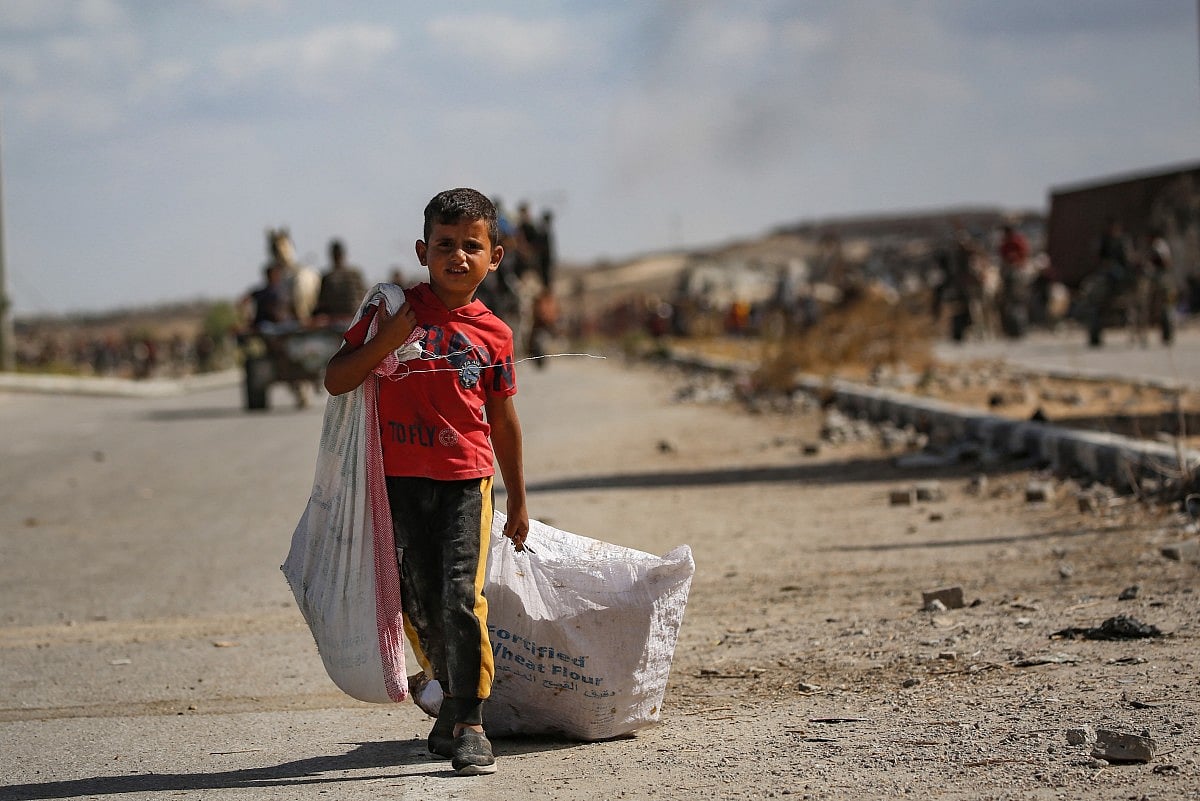Will Hamas backing of US Gaza peace plan finally end the war?
Trump says Netanyahu agrees to pause strikes; talks shift to Sharm Al Sheikh

Dubai: Both Israel and Hamas have indicated readiness to move forward on a new US-backed peace plan aimed at ending the two-year war in Gaza, releasing hostages, and charting a post-conflict political future for the embattled territory.
The proposal, unveiled by President Donald Trump, envisions an immediate ceasefire, a large-scale hostage–prisoner exchange, and the eventual disarmament of Hamas under international supervision. It would place Gaza under temporary international governance, led by a coalition of neutral nations and overseen by Trump and former British prime minister Tony Blair.
As negotiators met in Sharm Al Sheikh, Trump confirmed that Israeli Prime Minister Benjamin Netanyahu has agreed to halt military operations to allow implementation of the plan’s first stage.
Trump yesterday said the talks will take days. “They’re in negotiations right now as we speak. They’ve started the negotiations. It’ll last a couple of days,” Trump told reporters at the White House.
“We’ll see how it turns out. But I’m hearing it’s going very well,” he added.
The latest diplomatic push follows Hamas’s unexpected statement welcoming the initiative, with the group saying it was willing to release hostages and hand power to other Palestinian entities.
But deep mistrust and logistical obstacles remain. The plan’s timing, the extent of Hamas’s disarmament, and the future governance of Gaza continue to be disputed even as international mediators urge both sides to seize what they call a “narrow but historic opportunity for peace.”
What the plan means and what comes next
What are the main elements of the US plan?
The roadmap calls for an immediate end to hostilities, with Hamas releasing all 48 hostages it still holds — living or dead — within 72 hours. In exchange, Israel would free 1,950 Palestinian prisoners, including 250 serving life terms and all women and children detained since the war began. Israel would also return 15 Palestinian bodies for each Israeli hostage repatriated.
After Hamas’s disarmament, Israeli troops would withdraw, making way for an international peacekeeping force and a technocratic Palestinian administration to manage daily affairs. The plan explicitly states Hamas would play no role in governance but that its members pledging peaceful coexistence could remain in Gaza under amnesty.
How has Hamas responded?
Hamas said Friday it was open to releasing hostages and transferring power to a politically independent Palestinian body. However, it made no mention of disarmament, a key Israeli and U.S. demand. Senior Hamas official Osama Hamdan later said the group opposed the idea of foreign administration or foreign forces entering Gaza, calling it “unacceptable.”
What is Israel’s position?
Netanyahu has said Israel is “prepared for the implementation of the first stage,” referring to hostage releases. Yet he reiterated that there will be no full withdrawal from Gaza until Hamas completely disarms. Israeli officials say the army will maintain a “security perimeter” along Gaza’s borders even after a ceasefire, to prevent rearmament.
What did the US say about Israeli airstrikes?
US Secretary of State Marco Rubio said Sunday that Israel must stop bombing Gaza for the hostage release to proceed. “You can’t release hostages in the middle of strikes,” he told CBS News, adding that both sides “understand a pause is necessary.” Rubio also noted that while a ceasefire could come quickly, building a new government in Gaza “will take time.”
In a text exchange with a CNN reporter, Trump confirmed that Netanyahu was “on board” with ending the campaign, adding: “If Hamas refuses peace, they will face complete obliteration.”
Who is leading negotiations?
US envoy Steve Witkoff will head the American team in Sharm El-Sheikh, where delegations from Israel and Hamas are expected to arrive under Egyptian and Qatari mediation. Arab diplomats say a parallel intra-Palestinian dialogue is also being arranged to unify rival factions ahead of any transition.
What are the main obstacles?
Key sticking points include how and when Hamas disarms, who governs Gaza, and the duration of Israeli troop presence.
Some Hamas commanders are resisting foreign oversight, while right-wing Israeli ministers Bezalel Smotrich and Itamar Ben-Gvir have criticised the plan but stopped short of quitting Netanyahu’s coalition.
What is the mood among Palestinians and Israelis?
In Gaza, weary residents expressed cautious relief. “We want to end the war by any means possible because we are tired,” said displaced resident Arafa Al Amour.
In Israel, families of hostages welcomed the plan as “the closest opportunity yet” to bring loved ones home, urging Trump to push “with full force” to secure their release.
What’s next?
Talks that started in Sharm Al Sheikh aim to finalise the first phase — ceasefire and hostage release — before broader discussions on Gaza’s future begin.
Diplomats caution that “extremists on both sides” could derail the process. But for the first time in months, both Israel and Hamas appear willing to test a US-brokered framework that could end one of the bloodiest chapters of the conflict.
Sign up for the Daily Briefing
Get the latest news and updates straight to your inbox
Network Links
GN StoreDownload our app
© Al Nisr Publishing LLC 2025. All rights reserved.
